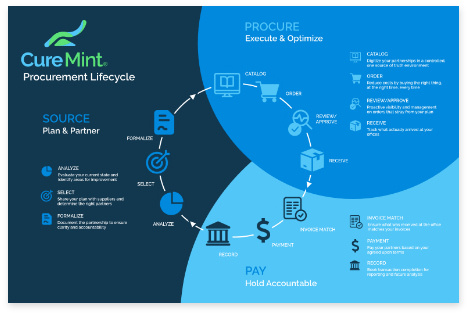At CureMint, we’re committed to driving down costs as we help your dental organization reshape its supply procurement strategy. In this blog series, we’ll guide you through nine easy steps to drive down your dental supply expenses so you can better manage your finances and become more profitable in the dental industry.
Ready to take charge? Here’s our third installment.
We’ve been doing a lot of homework up to this point in our nine-step process. But here’s where the rubber meets the road: manufacturer negotiations. You’ll be thankful for all the preparations we’ve guided you through when you start contacting suppliers and enter the negotiation phase. You will have witnessed some savings in Step Two, but you’ll really start saving money for your dental organization from here on out.
This may be the fun part for some of you, and we’re sure you’re chomping at the bit for the chance to haggle. But if you’re unsure of how to confidently aim for the best deals, don’t worry — we have your back.
STEP THREE: START NEGOTIATIONS
One of the most significant pieces of advice anyone can ever give you about negotiating is to have as much information on your side as possible. The more you know, the better you can angle for a deal.
If it helps ease your mind when considering this part of the process, think of when you’ve bought a car. Once you find the right make, model, and trim for you, you’ll want to know how much they’re selling for and start comparing prices. You’ll likely read some reviews of the different dealers you’ve visited and see who provides the best warranties or customer service. You’ll ask for a financing quote based on what you’ll contribute upfront as a down payment. You’ll definitely take a few options out for a test drive, then maybe even hire a mechanic to perform a pre-purchase inspection to ensure you aren’t driving off the lot with a lemon. And you can use all these points as leverage when you sit down with the salesperson to hammer out the details on finally purchasing the car.
Now, consider what we’ve done to this point. As it stands, we’ve already compared prices, received quotes, and learned about some of the side perks certain vendors or suppliers may provide you when buying from them. We’ll get to the test drives later with clinical trials but now’s when the haggling begins.
Once your RFQs have returned, calculate price-per-each for every product, focusing on one category at a time (for example, gloves, as we have to this point). Calculating the price of each individual unit is vitally important, both now and later in the process. For now, when you negotiate with vendors, it’s more important to know you purchased, say, 348,250 individual gloves than knowing you bought 1,311 boxes of gloves, as different glove brands come in different quantities. Figuring out price-per-each will help narrow down your options soon enough.

Now is the time to formally reach out to your different suppliers and vendors. Don’t fret if you don’t consider yourself a natural-born negotiator — just be honest, direct, transparent, and courteous, and you’ll do fine. Just shoot over a message like this:
Hey Bob’s Manufactured Gloves,
We are looking to consolidate all of our glove purchases to one manufacturer with the hopes of getting a volume-based discount. We currently order approximately 532 boxes a year from you, representing about 46% of our total glove purchases. I want to give you a chance to win the other 54% or 188,650 individual gloves, but I need you to get as aggressive as you can on pricing.
After you’ve dropped a line to your first choice, you should contact your other suppliers. Let them know that, as they aren’t the cheapest option, they have a chance at winning more of your business, as long as they beat your price-per-each calculations.
Again, be as respectful and tactful as possible while also laying out the situation plainly; whomever you decide to work with, you’re entering a business relationship with one of these parties, so it’s best to be on good terms with all potential partners.
Simple as that! As you can see, negotiations don’t have to be stressful or painful. It’s just a conversation between two partners, looking to do some friendly business together. All you need to do now is wait for the counter-offers to roll in, and then, we’ll move forward with price reviews.
Keep a lookout for Part Four: How to Determine the Best Price on the Best Products
Can’t wait for the next blog? We don’t blame you! Download the full guide to get immediate access to Step 4: Reviewing Your Data & Prepping for Clinical Trials.
Related Blogs
How to Get Started with Dental Spend Management When You Don’t Know Where to Start
09.30.21
For rapidly growing dental service organizations (DSOs), the…
Using Big Data to Lower Dental Supply Costs
09.28.21
As the dental market surpasses $150 billion and private…
Not All Dental Costs Are Equal: Which One Are You Focusing On?
09.27.21
It doesn’t matter whether you’re whitening teeth or selling…





